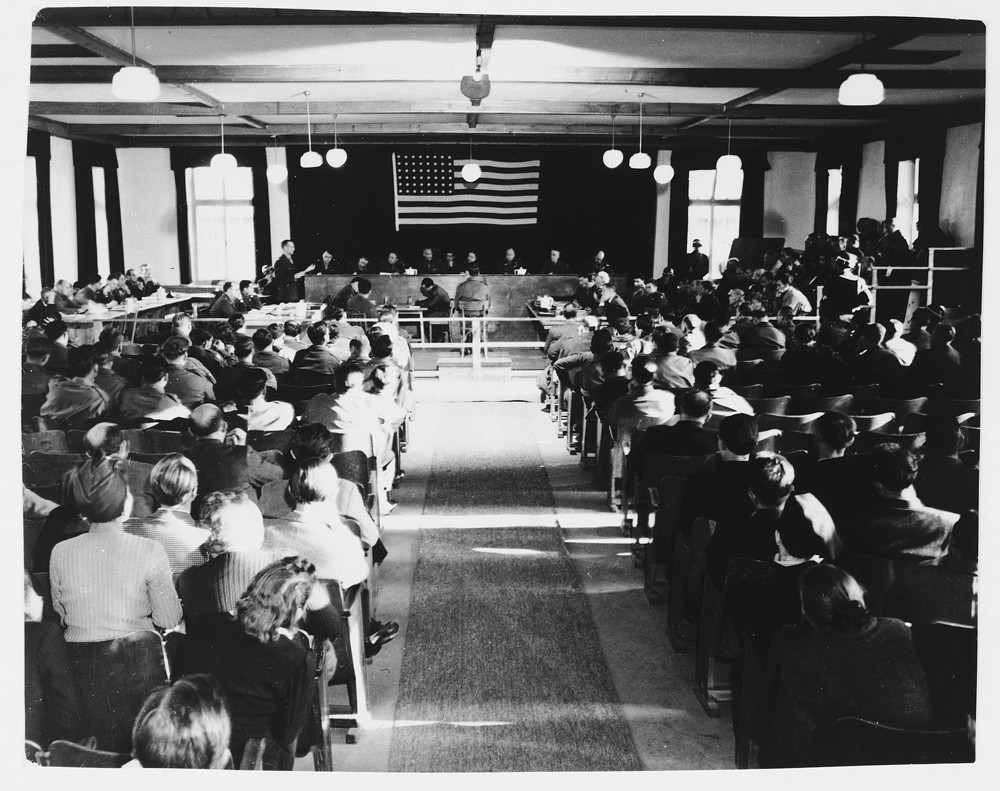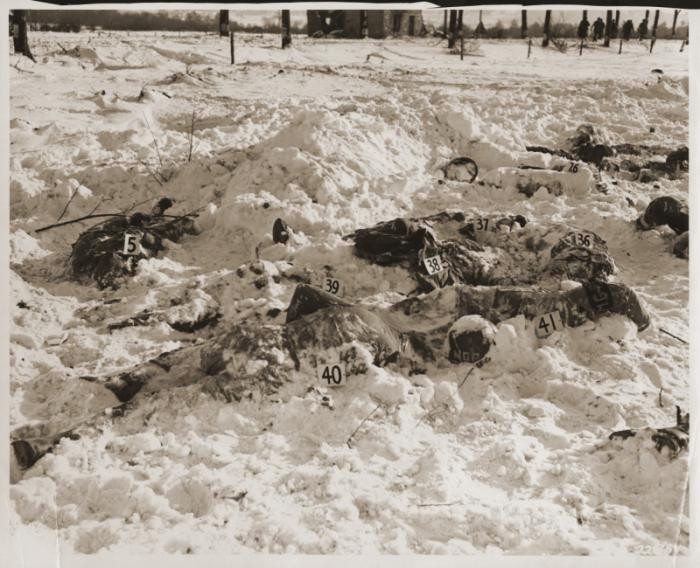
US Army Trials in Postwar Germany
Between June 1945 and December 1947 the US Army prosecuted 1,676 lesser war criminals in 462 trials. Some of these trials actually predated the opening of the International Military Tribunal at Nuremberg.
Those tried at Dachau included concentration camp personnel and Nazi military and state officials, as well as ordinary German civilians accused of violations of the laws of war. The accused were prosecuted for war crimes committed against members of Allied armed forces in German captivity and crimes against humanity perpetrated against the nationals of the Allied belligerents.

In the cases involving victims who were US and other Allied servicemen or women, the accused ranged from civilians and Nazi Party officials to German police and military personnel. All of the victims were air force personnel shot down over Germany or ground troops. The air force personnel were shot down from their planes over the German countryside. Upon their surrender on the ground, the flyers suffered mistreatment by the local population. Later, they were either lynched by mobs of civilians or executed by local police or party officials. Captured Allied ground troops, including US ground troops, were either shot after surrendering on the battlefield (as in the well publicized Malmedy massacre case, in which the victims were shot by the units of the Waffen-SS) or mistreated in German prisoner-of-war camps.
In cases involving mass atrocities, the defendants were accused of crimes committed against Allied civilians and prisoners of war in five concentration camps (Dachau, Mauthausen, Buchenwald, Flossenbürg, Nordhausen) and their subcamps (such as Mühldorf), as well as at the Hadamar psychiatric hospital. In these trials, the accused held official positions in the camps and were almost all members of the Nazi Party, one of its formations such as the SS (the elite Nazi guard), the SA (Nazi Storm Troopers), or the German military. A minority were civilian employees of the Third Reich while a few were concentration camp inmates themselves who had held privileged positions such as Kapos and block elders.
Critical Thinking Questions
- Who was put on trial and why?
- Investigate trials held in other zones of occupation.
- Is it ever too late to seek justice?

